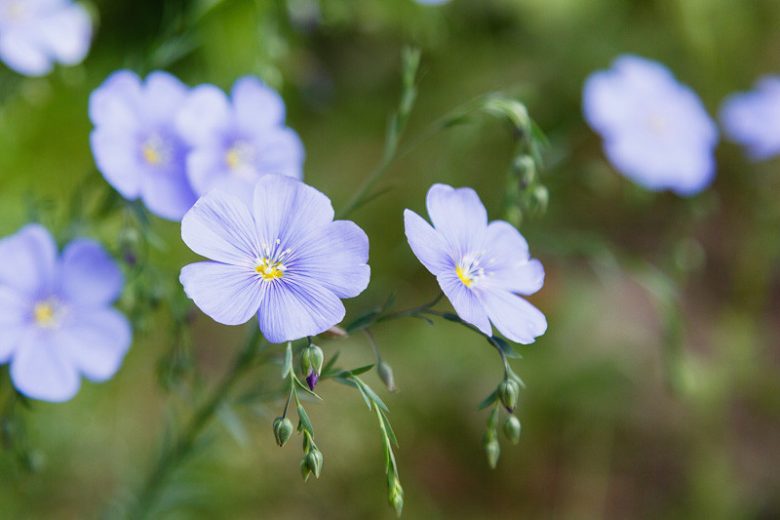journalofserviceclimatology.org – Perennial Flax (Linum perenne), also known as Blue Flax, is a stunning wildflower that blooms annually, returning year after year. Renowned for its delicate, vibrant blue flowers and slender, graceful foliage, this plant is a standout in gardens and landscapes. Native to North America, it can be found in prairies, meadows, and grasslands, where it thrives in well-drained soil and sunny locations. Perennial Flax is celebrated not only for its beauty but also for its low-maintenance growth and ecological benefits.
Physical Characteristics
Perennial Flax is a clumping plant that typically grows to about 12-18 inches (30-45 cm) in height. Its slender stems are topped with bright blue, five-petaled flowers that resemble tiny cups. The blooms are short-lived, usually lasting just a day, but they are produced in abundance, ensuring that the plant remains colorful for several weeks during the summer. The long, narrow leaves of Perennial Flax are a bluish-green, giving the plant an airy, soft texture that complements its bright flowers.
Growing Conditions
Perennial Flax thrives in full sun and requires well-drained soil. It is drought-tolerant once established, making it an excellent choice for xeriscaping or low-water gardens. While it can tolerate a variety of soil types, it grows best in slightly alkaline soil. This plant prefers dry to moderate moisture conditions, and excessive watering or poor drainage can lead to root rot. Perennial Flax is perfect for rock gardens, wildflower meadows, or as part of a cottage garden, and it can also be grown in containers.
Uses in Gardening and Landscaping
Perennial Flax is often incorporated into gardens for its striking color and low-maintenance growth. It pairs beautifully with other wildflowers and grasses, such as black-eyed Susans, lavender, and coreopsis, creating a vibrant, naturalistic look. Its compact size makes it ideal for small gardens, borders, or as groundcover. Additionally, it attracts pollinators like bees and butterflies, adding ecological value to any garden space. Its graceful form and bright blooms also make it a popular choice for ornamental plantings in public spaces and landscapes.
Health and Medicinal Benefits
While Perennial Flax is primarily admired for its aesthetic appeal, its seeds are related to those of the common flax (Linum usitatissimum), which are known for their nutritional benefits. Flax seeds are a rich source of omega-3 fatty acids, fiber, and antioxidants. However, the Perennial Flax plant itself is not typically used for medicinal purposes in the same way as its cousin. The plant’s main value lies in its ability to enhance gardens and support local wildlife.
Ecological Importance
Perennial Flax plays a crucial role in local ecosystems. Its flowers attract pollinators, especially bees and butterflies, which are vital for pollination and the production of many other plants and crops. The plant’s seeds also serve as a food source for birds and small mammals. Because of its adaptability to various soil types and climates, it helps stabilize soil, prevent erosion, and supports biodiversity in natural areas.
Conclusion
Perennial Flax is an elegant, versatile flower that adds beauty and function to any garden or landscape. With its vibrant blue flowers, delicate form, and ability to thrive in a variety of conditions, it is an excellent choice for gardeners looking to create a low-maintenance yet visually striking garden. Beyond its aesthetic value, Perennial Flax supports local pollinators and wildlife, making it a plant that benefits both the environment and those who enjoy it. Whether you are an experienced gardener or a beginner, Perennial Flax is a fantastic addition to any outdoor space.
